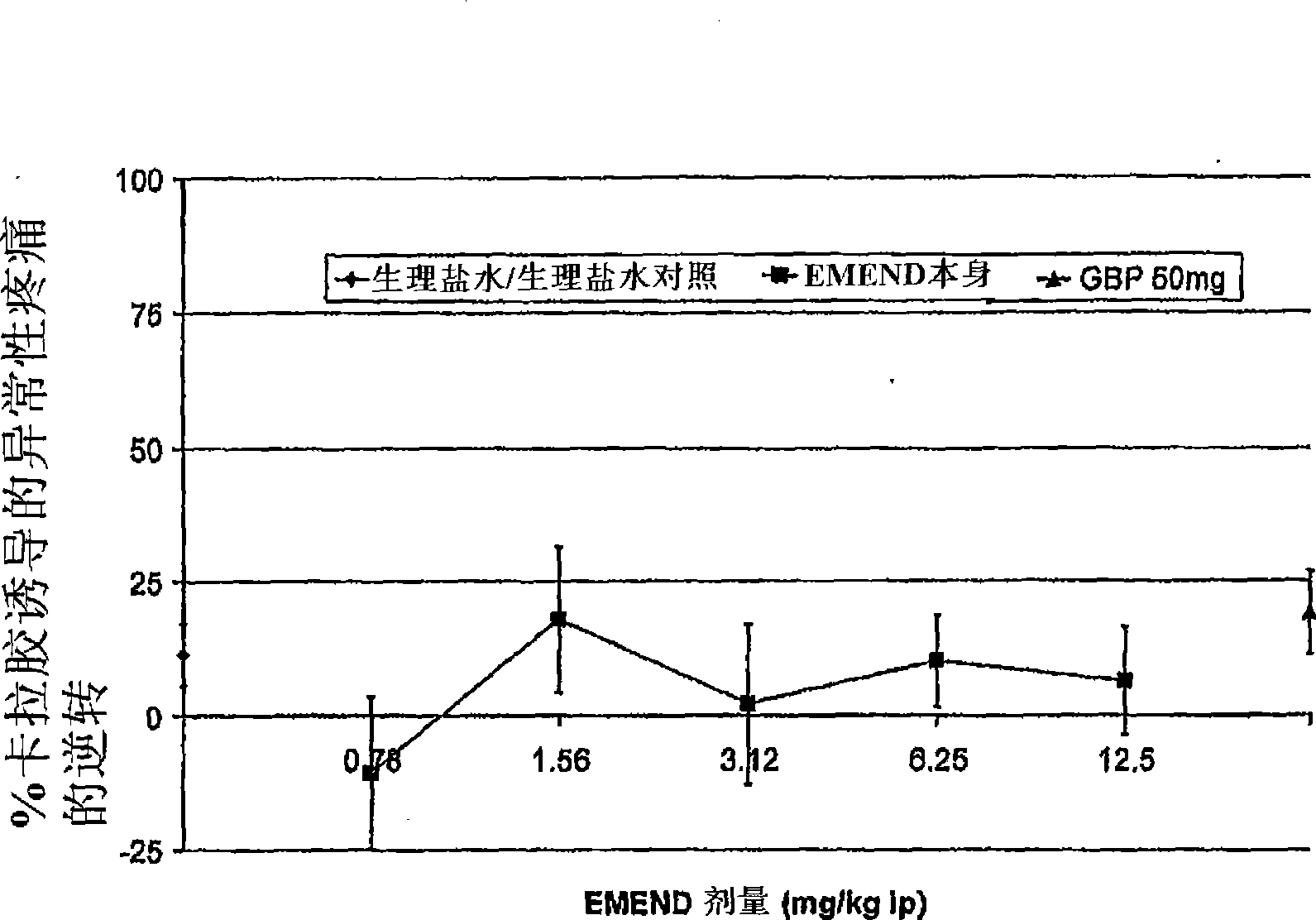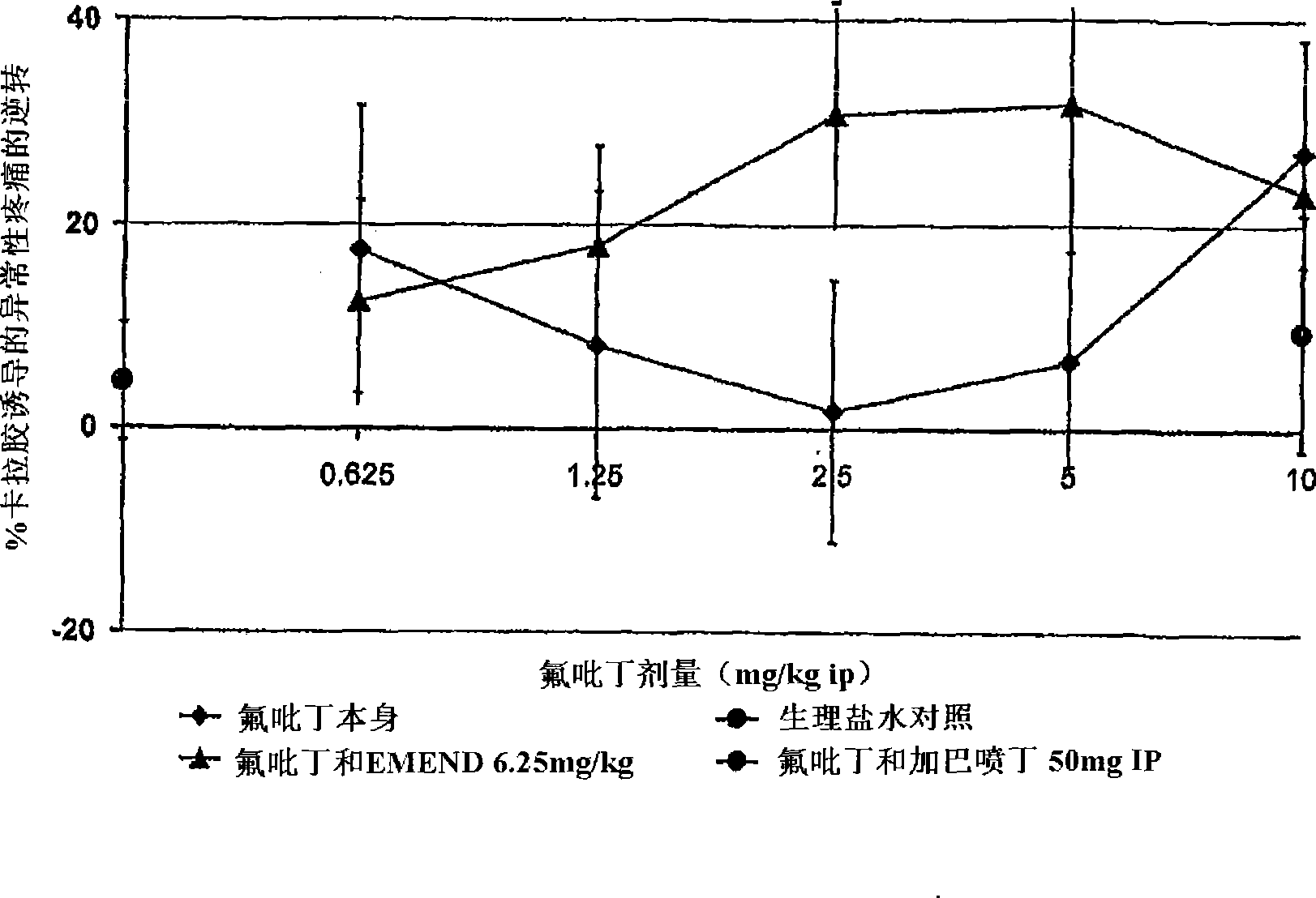Methods and composition for treatment of inflammatory pain
A technology for inflammatory pain and inflammatory process, applied in the field of relieving, treating inflammatory pain, reducing or otherwise improving the symptoms, prevention, and treatment of inflammatory pain, and can solve problems such as weak effect and slow effect
- Summary
- Abstract
- Description
- Claims
- Application Information
AI Technical Summary
Problems solved by technology
Method used
Image
Examples
Embodiment 1
[0197] Use of NK1 antagonists in the treatment of pain
[0198] Experiments were performed using male Wistar rats (weight 150 to 220 g). Three series of experiments were conducted in an observer-blind manner, including saline (negative) control and gabapentin (GABAPentin) (positive) control. The research is divided into three phases:
[0199] 1. Tested the sedation of aprepitant (an example of NK antagonist) alone and in combination with flupirtine (an example of a neuroexcitatory inhibitor) over a range of doses using an open field activity monitor Effect. This approach determines the doses of drugs and drug combinations that can be used for analgesic effects that do not cause sedation;
[0200] 2. To test the ability of aprepitant administered alone and in combination with flupirtine in a range of doses to reverse the allodynia effect induced by plantar injection of carrageenan;
[0201] 3. To test the ability of aprepitant administered alone and in combination with flup...
Embodiment 2
[0215] Compound Screening in In Vivo Models
[0216] The animal experimental model of pain caused by inflammation in humans is carrageenan paw inflammation in rats. Plantar injection of carrageenan into the pad of one hind paw of male Wistar rats resulted in inflammation and swelling of the hind paw over a three hour period. This causes a decrease in paw pressure paw retraction threshold. Injury tolerance was measured in the normal rat hind paw and in the inflammatory hind paw of carrageenan-treated rats, using a noxious stimulus such as the heat-flash-foot test, to measure paw retraction; or using calibrated Von Frey fibers as a stimulus, to measure Paw retraction of pressure applied to the inflamed paw. The key points shown by these results are:
[0217] 1. The maximum non-sedating dose of each drug. Rats were first administered a range of drug doses, followed by assessment of sedation using two tests: the outdoor exploration and the rota-rod test.
[0218] 2. Using carr...
PUM
 Login to View More
Login to View More Abstract
Description
Claims
Application Information
 Login to View More
Login to View More - R&D
- Intellectual Property
- Life Sciences
- Materials
- Tech Scout
- Unparalleled Data Quality
- Higher Quality Content
- 60% Fewer Hallucinations
Browse by: Latest US Patents, China's latest patents, Technical Efficacy Thesaurus, Application Domain, Technology Topic, Popular Technical Reports.
© 2025 PatSnap. All rights reserved.Legal|Privacy policy|Modern Slavery Act Transparency Statement|Sitemap|About US| Contact US: help@patsnap.com



